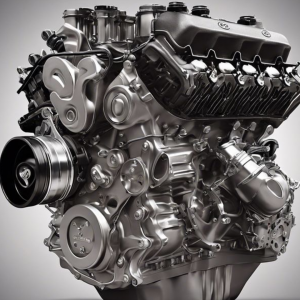As oil and gas fields mature, well intervention operations play a crucial role in maintaining productivity, extending well life, and optimizing reservoir recovery. With the evolution of digitalization and advanced materials, well intervention technologies have become more efficient, cost-effective, and safer.

Key Innovative Technologies for Well Intervention
1. Coiled Tubing (CT) with Real-Time Data Acquisition
Traditional coiled tubing has long been a standard in well intervention. However, the integration of real-time downhole data acquisition systems is a game-changer. Sensors embedded in the coil provide operators with live feedback on pressure, temperature, and flow rates, enabling immediate adjustments and improved decision-making.
Key Benefits:
Minimizes risk of formation damage
Enhances precision in acidizing and cleanout jobs
Reduces non-productive time (NPT)
2. Smart Wireline Tools
Wireline services have evolved into a platform for smart intervention. Today’s wireline tools are equipped with digital sensors and telemetry systems that allow remote monitoring and diagnostics. These tools can perform logging, perforating, and setting packers without pulling out the string.
Key Innovations:
Memory and real-time logging systems
Downhole cameras and acoustic sensors
Wireless-enabled communication
3. Rigless Intervention Systems
In an effort to cut costs and increase mobility, operators are turning to rigless well intervention technologies. Using lightweight hydraulic workover units (HWUs), slickline, and wireline tractors, operators can intervene in subsea and land wells without a traditional rig.
Advantages:
Cost savings on rig mobilization
Fast deployment in remote areas
Minimal environmental footprint

4. Fiber Optic Sensing
Distributed Acoustic Sensing (DAS) and Distributed Temperature Sensing (DTS) use fiber optic cables installed in the wellbore to gather continuous data along the entire length of the well.
Applications:
Leak detection
Fracture monitoring
Production profiling
Fiber optic technologies provide unparalleled insight into well conditions, helping teams make proactive intervention decisions.
5. Autonomous Downhole Robots
One of the most futuristic innovations in well intervention is the deployment of robotic tools that can navigate through the wellbore autonomously.
Functions:
Inspect tubing and casing integrity
Remove scale and obstructions
Perform mechanical repairs
These robots are especially useful in high-angle or horizontal wells where traditional tools face limitations.
6. Digital Twin and AI Integration
The digital twin model—a real-time virtual replica of the well—combined with artificial intelligence, allows for predictive maintenance and simulation-based decision-making.
Benefits:
Optimize timing of interventions
Reduce downtime through proactive alerts
Improve reservoir management strategies
AI models learn from historical data to recommend customized intervention plans, enhancing operational success.
7. Advanced Plug and Abandonment (P&A) Solutions
As more wells approach end-of-life, innovative P&A techniques are being developed to seal wells permanently and safely. New materials like bismuth alloys, resins, and expandable barriers replace traditional cement, ensuring long-term integrity.
Emerging Trends:
Laser cutting tools
Resin-based zonal isolation
Non-explosive setting mechanisms
How Simulation Technology is Used for Well Intervention Operations
1. Pre-Job Planning and Risk Assessment
Simulation software enables operators to virtually model the well environment before executing an intervention. By inputting data such as well trajectory, pressure, temperature, and completion details, engineers can simulate various intervention scenarios.
Applications:
Identify potential hazards (e.g., stuck tools, overpressure)
Optimize tool selection and string design
Assess fluid dynamics and compatibility
This allows teams to evaluate risks and develop contingency plans before deploying equipment in the field.
2. Real-Time Job Monitoring and Optimization
Some advanced simulation tools offer real-time integration with downhole data (e.g., from sensors in coiled tubing or wireline tools). These live simulations help operators visualize the current operation and adjust on the fly.
Benefits:
Real-time visualization of tool position and well response
Dynamic updates to intervention models
Immediate decision-making support
This minimizes non-productive time and improves operational control during complex jobs.
3. Training and Competency Development
Simulation technology is also critical for training personnel through realistic, hands-on experiences in a virtual environment. Using well intervention simulators, trainees can perform mock operations without any real-world risk.
Used to Train:
Coiled tubing operators
Wireline and slickline technicians
Snubbing unit operators
Hydraulic workover crews
These simulators provide scenarios involving pressure control, toolstring failures, and well instability, helping develop competence in high-risk situations.

4. Tool and Technique Evaluation
Before field deployment, simulation allows for testing and evaluation of new tools or intervention techniques under various well conditions.
Use Cases:
Validating tool configurations and deployment sequences
Testing new chemical formulations for stimulation
Assessing wear and fatigue under extended runs
This enhances tool reliability and reduces trial-and-error costs in real wells.
5. Integration with Digital Twin Models
Simulation software can be integrated into digital twin systems—virtual replicas of physical wells that continuously update with real-time field data. This allows teams to simulate interventions on a live replica of the well, increasing precision in planning and execution.
Advantages:
Simulate impact of intervention on production
Predict outcomes using historical and current data
Coordinate multi-disciplinary teams in a unified digital environment
6. Post-Intervention Analysis and Reporting
After completing an intervention, simulation tools help analyze the effectiveness of the operation and identify areas for improvement.
Post-Job Capabilities:
Replay of operational steps
Evaluation of pressure and flow responses
Root cause analysis of anomalies
This leads to better planning for future interventions and enhanced understanding of well behavior.
Summary
Well intervention is no longer just about fixing problems—it's about smart, data-driven optimization. From real-time sensing to autonomous robotics and digital twins, these innovations are increasing efficiency, lowering costs, and enhancing safety in today's complex drilling environments.
Simulation technology offers a comprehensive solution to the complexities of well intervention. From planning and training to execution and analysis, it enhances accuracy, boosts safety, and improves economic outcomes.






